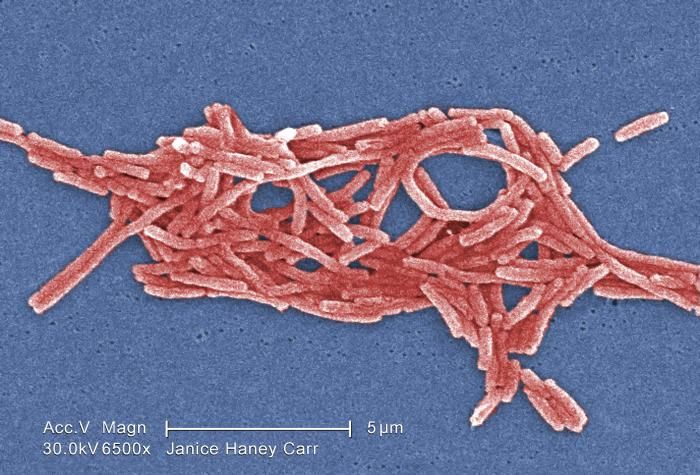Legionnaires’ Disease in Lincoln, NH: Lincoln Nh Legionnaires Disease

Lincoln, New Hampshire, a picturesque town nestled in the White Mountains, has unfortunately experienced its share of Legionnaires’ disease outbreaks. While the town boasts breathtaking scenery and outdoor recreation opportunities, the presence of this potentially serious bacterial infection has cast a shadow over its idyllic charm.
Timeline of Notable Events
Legionnaires’ disease outbreaks in Lincoln, NH, have been a recurring concern for the local community and authorities. Here’s a timeline of significant events:
- 2000: The first reported outbreak of Legionnaires’ disease in Lincoln, NH, occurred in 2000. This outbreak was linked to a local hotel, and several cases were reported. The investigation identified the source of the outbreak as the hotel’s water system, highlighting the importance of proper maintenance and disinfection protocols.
- 2005: Another outbreak was reported in 2005, this time linked to a local restaurant. The restaurant’s water system was identified as the source of the outbreak. This incident prompted the town to implement stricter regulations for water systems in public establishments.
- 2010: A third outbreak occurred in 2010, with several cases linked to a local motel. The outbreak was traced to the motel’s cooling tower, which had not been properly maintained. This incident further emphasized the need for regular inspection and maintenance of cooling towers.
- 2015: The town of Lincoln experienced another outbreak in 2015, this time linked to a local community center. The outbreak was attributed to the community center’s water system, prompting the town to implement a comprehensive water safety program for public facilities.
Impact on the Community and Tourism
The recurring outbreaks of Legionnaires’ disease in Lincoln, NH, have had a significant impact on the local community and tourism industry.
- Public Health Concerns: The outbreaks have raised concerns about public health and safety, leading to increased awareness and vigilance regarding the potential risks associated with Legionnaires’ disease. Local residents and visitors alike have become more conscious of the importance of maintaining clean water systems and seeking medical attention if they experience symptoms.
- Economic Impact: The outbreaks have also had a significant economic impact on Lincoln, NH. Outbreaks can lead to business closures, decreased tourism, and loss of revenue for local businesses. The impact on the tourism industry is particularly significant, as the town relies heavily on tourism revenue. For example, the 2010 outbreak at the local motel resulted in a significant drop in bookings and revenue for the establishment. The town has actively worked to address these economic concerns by implementing stricter regulations and promoting public awareness campaigns.
- Community Trust: The outbreaks have also impacted community trust and confidence in the town’s ability to ensure public safety. The recurring nature of the outbreaks has led to concerns about the effectiveness of the town’s public health infrastructure and the ability to prevent future outbreaks. The town has been actively working to rebuild trust and confidence by implementing comprehensive water safety programs and collaborating with local businesses and residents to ensure the safety of the community.
Environmental Factors Contributing to Outbreaks

Legionnaires’ disease outbreaks are often linked to specific environmental conditions that favor the growth and spread of Legionella bacteria. Understanding these factors is crucial for preventing future outbreaks and protecting public health.
Sources of Legionella Bacteria
Legionella bacteria can thrive in various environments, including water systems, cooling towers, and natural bodies of water. These sources can serve as breeding grounds for the bacteria, increasing the risk of transmission.
- Water Systems: Legionella bacteria can colonize stagnant water in plumbing systems, particularly in hot water tanks, showers, and faucets. Inadequate maintenance, such as lack of regular flushing and disinfection, can contribute to bacterial growth.
- Cooling Towers: These industrial structures, used for cooling water in buildings and manufacturing facilities, can harbor Legionella bacteria in their water reservoirs. The warm, moist environment and stagnant water provide ideal conditions for bacterial growth.
- Natural Bodies of Water: While less common, Legionella bacteria can also be found in lakes, rivers, and ponds. The presence of stagnant water, particularly in areas with high levels of organic matter, can support bacterial growth.
Environmental Conditions Favoring Legionella Growth
Legionella bacteria prefer specific environmental conditions to thrive. These conditions vary depending on the source, but generally include:
- Warm Temperatures: Legionella bacteria thrive in warm water, typically between 77°F and 113°F (25°C and 45°C). This is why hot water systems, cooling towers, and even hot tubs can be breeding grounds for the bacteria.
- Stagnant Water: Legionella bacteria require stagnant water to grow. This means that water that is not regularly flushed or circulated is more likely to become contaminated.
- Nutrients: Legionella bacteria need nutrients to survive and grow. These nutrients can come from organic matter, such as dirt, debris, and biofilm, which can accumulate in water systems.
Climate and Weather Patterns
Climate and weather patterns can influence the prevalence of Legionnaires’ disease. For instance, warmer temperatures and increased humidity can create favorable conditions for Legionella growth.
Example: In the summer months, when temperatures are high and humidity is elevated, there is an increased risk of Legionnaires’ disease outbreaks. This is because the warm, moist environment promotes the growth of Legionella bacteria in water systems and cooling towers.
Public Health Response and Prevention Measures

The public health response to Legionnaires’ disease outbreaks in Lincoln, NH, is a multi-faceted approach that prioritizes swift action, public awareness, and preventative measures. Local health officials, in collaboration with the New Hampshire Department of Health and Human Services (DHHS), play a critical role in investigating outbreaks, identifying sources of contamination, and implementing control measures to protect the community.
Public Health Response to Outbreaks
When Legionnaires’ disease cases are reported, a rapid investigation is launched to determine the source of infection. This process typically involves:
* Case Identification and Investigation: Public health officials collect information about the affected individuals, including their travel history, potential exposures, and symptoms. This information helps to identify potential common exposures and pinpoint the source of the outbreak.
* Environmental Sampling: Samples of water from potential sources, such as cooling towers, hot tubs, and plumbing systems, are collected and analyzed for the presence of Legionella bacteria. This helps to confirm the source of the outbreak and identify areas requiring remediation.
* Public Health Communication: The public is informed about the outbreak, potential risks, and preventative measures. This communication often involves press releases, public health advisories, and community meetings.
* Remediation and Control Measures: Once the source of the outbreak is identified, steps are taken to eliminate the bacteria and prevent future outbreaks. These measures might include:
* Disinfection: Cleaning and disinfecting contaminated water systems, including cooling towers, hot tubs, and plumbing.
* Water Management Practices: Implementing proper water management practices, such as maintaining optimal water temperatures, flushing stagnant water, and using biocides to control Legionella growth.
* Building Maintenance: Regularly inspecting and maintaining building systems, including plumbing, ventilation, and water-related equipment, to prevent the growth of Legionella.
Public Health Campaign for Legionnaires’ Disease Awareness, Lincoln nh legionnaires disease
To prevent future outbreaks, a comprehensive public health campaign is crucial. This campaign should target the general public, healthcare providers, and building owners and managers. Key elements of the campaign could include:
* Public Service Announcements (PSAs): Engaging and informative PSAs can be disseminated through various media channels, such as television, radio, and social media, to raise awareness about Legionnaires’ disease, its symptoms, and prevention strategies.
* Educational Materials: Brochures, flyers, and online resources can provide detailed information about Legionnaires’ disease, risk factors, and preventative measures.
* Community Outreach: Public health officials can conduct presentations and workshops in community centers, senior centers, and other venues to educate the public about Legionnaires’ disease and its prevention.
* Healthcare Provider Education: Training programs and resources can be developed to educate healthcare providers about Legionnaires’ disease, its diagnosis, and appropriate treatment.
* Building Owner and Manager Training: Workshops and seminars can be conducted to educate building owners and managers about Legionnaires’ disease, water management practices, and building maintenance protocols.
Prevention Strategies for Legionnaires’ Disease
Legionnaires’ disease is preventable through a combination of water management practices, building maintenance, and individual hygiene.
Water Management Practices
* Maintain Optimal Water Temperatures: Legionella bacteria thrive in warm water temperatures, between 80°F and 115°F. It is important to maintain water temperatures above 140°F in hot water tanks and below 90°F in cooling towers to inhibit Legionella growth.
* Flush Stagnant Water: Stagnant water provides a breeding ground for Legionella. Regularly flushing water systems, such as showerheads, faucets, and cooling towers, can help to remove stagnant water and reduce the risk of Legionella growth.
* Use Biocides: Biocides, such as chlorine or bromine, can be used to disinfect water systems and control Legionella growth. The concentration and frequency of biocide use should be carefully monitored to ensure effectiveness.
Building Maintenance
* Regular Inspection and Maintenance: Regularly inspecting and maintaining building systems, including plumbing, ventilation, and water-related equipment, is crucial for preventing Legionella growth.
* Proper Ventilation: Adequate ventilation is essential to prevent the accumulation of moisture and humidity, which can create favorable conditions for Legionella growth.
* Control Water Leaks: Promptly repairing water leaks and drips can help to prevent the formation of stagnant water and reduce the risk of Legionella growth.
Individual Hygiene
* Practice Good Hygiene: Washing hands frequently with soap and water, especially after touching surfaces that may be contaminated with Legionella, can help to prevent the spread of the bacteria.
* Avoid Using Contaminated Water: Do not use hot tubs, showers, or other water sources that may be contaminated with Legionella.
* Consult a Healthcare Provider: If you experience symptoms of Legionnaires’ disease, such as fever, cough, muscle aches, and headache, consult a healthcare provider immediately.
Lincoln nh legionnaires disease – The recent outbreak of Legionnaires’ disease in Lincoln, New Hampshire, serves as a stark reminder of the importance of public health vigilance. While the investigation into the source of the outbreak continues, it is a timely reminder that environmental factors can significantly impact public health.
This issue is not isolated to New Hampshire, as global events, such as the complexities of the Middle East, often have ripple effects on health and safety measures. Israeli news often highlights the intersection of political instability and public health concerns, which can serve as a valuable case study for understanding the interconnectedness of global health issues.
In the case of Lincoln, NH, the outbreak underscores the importance of understanding how environmental factors, coupled with global trends, can impact local health outcomes.
The outbreak of Legionnaires’ disease in Lincoln, New Hampshire, serves as a stark reminder of the importance of public health vigilance. While local authorities focus on containment and treatment, it’s essential to consider broader global health issues, such as the ongoing developments in news iran , which may impact disease surveillance and control efforts.
Understanding the global context is crucial for preventing future outbreaks, including those of Legionnaires’ disease, and ensuring the safety of communities worldwide.
